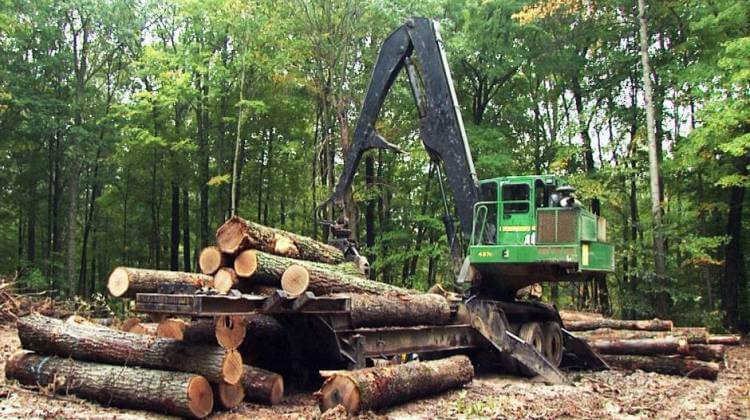The logging project on the National Life Forest in Vermont is nearing completion.
This project thinned the forest in the areas between the campus, Route 2 and Route 12. The logger has about 5 acres to complete, most of which are at the western end of the harvest area. As the landing is at the southeastern end, this means that the skidder will continue to cross the recreational trail system, and the recreational trails should remain closed until this harvest work is complete.
Many thanks to the trail users, for refraining from using the trail during this project.
As a reminder to you and the other members of the National Life community, the National Life forest is managed to meet several objectives: producing forest products through ecological forestry, providing a recreational resource, and enhancing wildlife habitat features. Management to meet these objectives is described in a Forest Management Plan. The work in the forest is overseen by a Vermont Licensed Forester, and the Management Plan and activities are approved by the Department of Forests, Parks and Recreation, through the Use Value Appraisal program.
The current project has been successful. The harvesting was designed to improve the average quality of the stand by removing low-quality trees. Most of that material was utilized as firewood. We also created a few small patch cuts to allow the development of the understory, to establish the next generation of trees, and to provide low-cover for wildlife. We also harvested a small number of white ash trees, which are at risk for infestation by an invasive non-native species, the Emerald Ash Borer (EAB). Last year, this insect was found in a planted ash tree on the National Life campus. White Ash trees in the forest were preemptively salvaged to prevent losses due to EAB. A few ash trees were retained, as recommended by the Department of Forests, Parks and Recreation.
We expect that the harvest phase of the project to be finished in the next week to 10 days. We will let you know when the logging is complete, and will notify you when the trail can be opened. There may be a small amount of work still to be completed near the landing, but that will not require crossing the trail.
After the harvest is complete, work will be suspended until mid–May or so. Then the skid trails will be smoothed and waterbars (drainage structures) will be installed. During April and May, the pre-existing recreational trails will be available for use, but the skid trails will likely be very soft and muddy, so please ask your community to refrain from using them until they are smoothed and waterbarred. Once that work is complete, you may wish to use the skid trails as part of the recreation trail network.
Finally, once this harvest is complete, this area will now be allowed to grow for a period of about 15 years, at which time, an operation similar to that which occurred this winter is expected.
– Craig Strachan, Facilities

